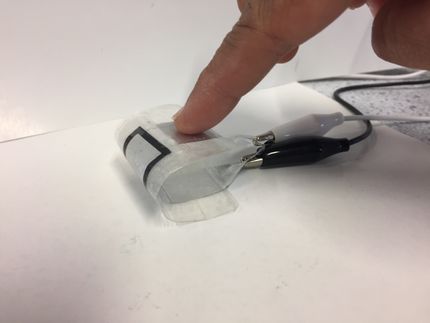Zarlink Leads UK-Government Funded Project Developing Implanted Microgenerator to Harvest Human Energy
A UK-based consortium of companies announced that it is developing an in-body microgenerator that shall convert energy from human body movement into power for implanted medical devices, including pacemakers, electrical stimulators, instrumented joints and body area network applications. The project, led by Zarlink Semiconductor, has received (pnds stlg)500,000 in funding from the UK Department of Trade and Industry (DTI), which will be match-funded by the consortium.
Today, batteries in implanted medical devices have a limited lifespan, some needing replacement within seven to 10 years depending on use. Increasing clinical applications, for example wireless monitoring of cardiac pacemakers, and the continuous drive to design less obtrusive implanted devices, is placing further strains on battery operating lifetimes.
While some implanted device batteries can be externally recharged, more commonly the patient must undergo a time-consuming and costly surgical replacement of the entire device. The two-year SIMM (self-energizing implantable medical micro system) project will prototype a device capable of harvesting energy from movement in or on the body, including joint movement and heartbeats. Body energy will be harvested by means of a microgenerator manufactured as a MEMS (micro-electrical-mechanical system). This prototype design is expected to achieve 10-100 times more power than previous attempts to harvest human energy.
The multi-disciplinary consortium is made up of six companies chosen for their core engineering skill, product exploitation potential and clinical excellence. The group consists of: Finsbury Orthopaedics, Innos, InVivo Technology, Odstock Medical, Perpetuum Ltd. and Zarlink Semiconductor.
Most read news
Organizations
Other news from the department science

Get the life science industry in your inbox
By submitting this form you agree that LUMITOS AG will send you the newsletter(s) selected above by email. Your data will not be passed on to third parties. Your data will be stored and processed in accordance with our data protection regulations. LUMITOS may contact you by email for the purpose of advertising or market and opinion surveys. You can revoke your consent at any time without giving reasons to LUMITOS AG, Ernst-Augustin-Str. 2, 12489 Berlin, Germany or by e-mail at revoke@lumitos.com with effect for the future. In addition, each email contains a link to unsubscribe from the corresponding newsletter.





















































